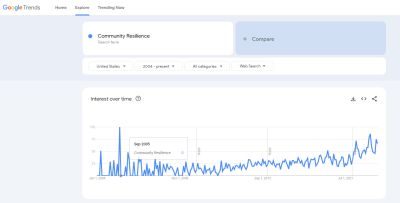PBEM Community Resilience Team Mission, Vision, and Values
...
Vision
Portlanders support one another to respond, adapt, and thrive after a disaster.
...
Mission
Building networks of resilience for all who live, work, and play in Portland.
...
Values
...
- PBEM CRT includes the whole community. Portlanders, emergency management practitioners, organizational and community leaders, and businesses will understand and assess the resilience needs of their communities and determine the best ways to organize and strengthen that resilience.
- PBEM CRT centers its work in service to communities historically most impacted by disaster: communities of color, immigrants, refuges, and people with disabilities. Our first partners are leaders of Portland’s historically underserved communities. We prefer universal design and lead with equity to design and translate resources and programming usable by all people with minimal adaptation.
- PBEM CRT favors quality over quantity. We recognize that resources spent on good design, long-term partnerships, complete sentences over bullet points, and conversations over slide shows result in clear messages, force multipliers, and decentralized expertise with universal access to knowledge and practices of community resilience.
- Safety first. The physical safety and psychological/emotional well-being of PBEM volunteers is a first priority in training, deployment, and all other PBEM-sponsored activities. This means providing a sufficient level of training for tasks and making sure that everyone has appropriate Personal Protective Equipment (PPE). This also recognizes collective accountability between PBEM and the volunteers, and between volunteers, for safety.
...
PBEM's Commitment to Equity and Inclusion
(what is equity?)
(everyone has a part to play in resilience)
(marginalized communities bear the brunt of disasters)
...
PBEM's Approach to Community Resilience

.Community resilience is a shared, community-based practice building social connections, collective strengths, and skills key to resisting/absorbing/recovering from a widespread disaster, as well as local and regional emergencies..
Participants in PBEM community programs will notice this view of resilience in all our activities and coaching. We build it into the Neighborhood Emergency Team (NET) program, Community Resilience Workbook, and Community Organizations Active in Disaster (COAD). But, PBEM's CRT definition is not the only definition of community resilience, and that matters.
Americans have shown growing interest in "community resilience" since Hurricane Katrina struck in August 2005 (see diagram 1). In a feedback loop of interest generating ideas, many academics, civil servants, and leaders see a link between resilience and a reduction of harmful outcomes from disasters, without clarity on what “community resilience” should mean. As a result, different definitions of community resilience exist. Each reflect, and are freighted by, the views of their authors.
PBEM is not above offering a definition that best suits us, similar to many others, while possibly not passing muster among hard-nosed social scientists.[1] Fortunately, this Guide was not written for them. Volunteers should simply know that many approaches to community resilience exist. PBEM’s definition of community resilience specifically serves an orientation to disaster preparedness and response.
...
Community Resilience Team Program Budgets
Introduction
The NET program budget is a complicated creature.
As you walk through it, you'll see it relies on different significant funding sources (grants and city general fund) and is sliced into smaller "program-lets" and projects. There are seven program "buckets" in NET: Program Operations, Basic NET, Advanced Training, Radio, Community Organizing, Youth Programming, and Program Development. We'll break down each of them. This budget does not include personnel costs (salaries and benefits).
Spending is often cross referenced between programs/projects to accurately evaluate outcomes and deliverables. On top of all that, NET spends its budget over many small transactions...380 on an average fiscal year. Why a NET budget dashboard?
- Simplify monitoring program budget for internal City of Portland staff.
- Create a clear guide for comparing program outcomes to spending.
- Transparency for NET volunteers.
- General educational purposes.
References
- ↑ For context, the most recognized definition of resilience comes from the United Nation International Strategy for Disaster Reduction (UNISDR): “the ability of a system, community or society exposed to hazards to resist, absorb, accommodate to and recover from the effects of a hazard in a timely and efficient manner, including through the preservation and restoration of its essential basic structures and functions”.